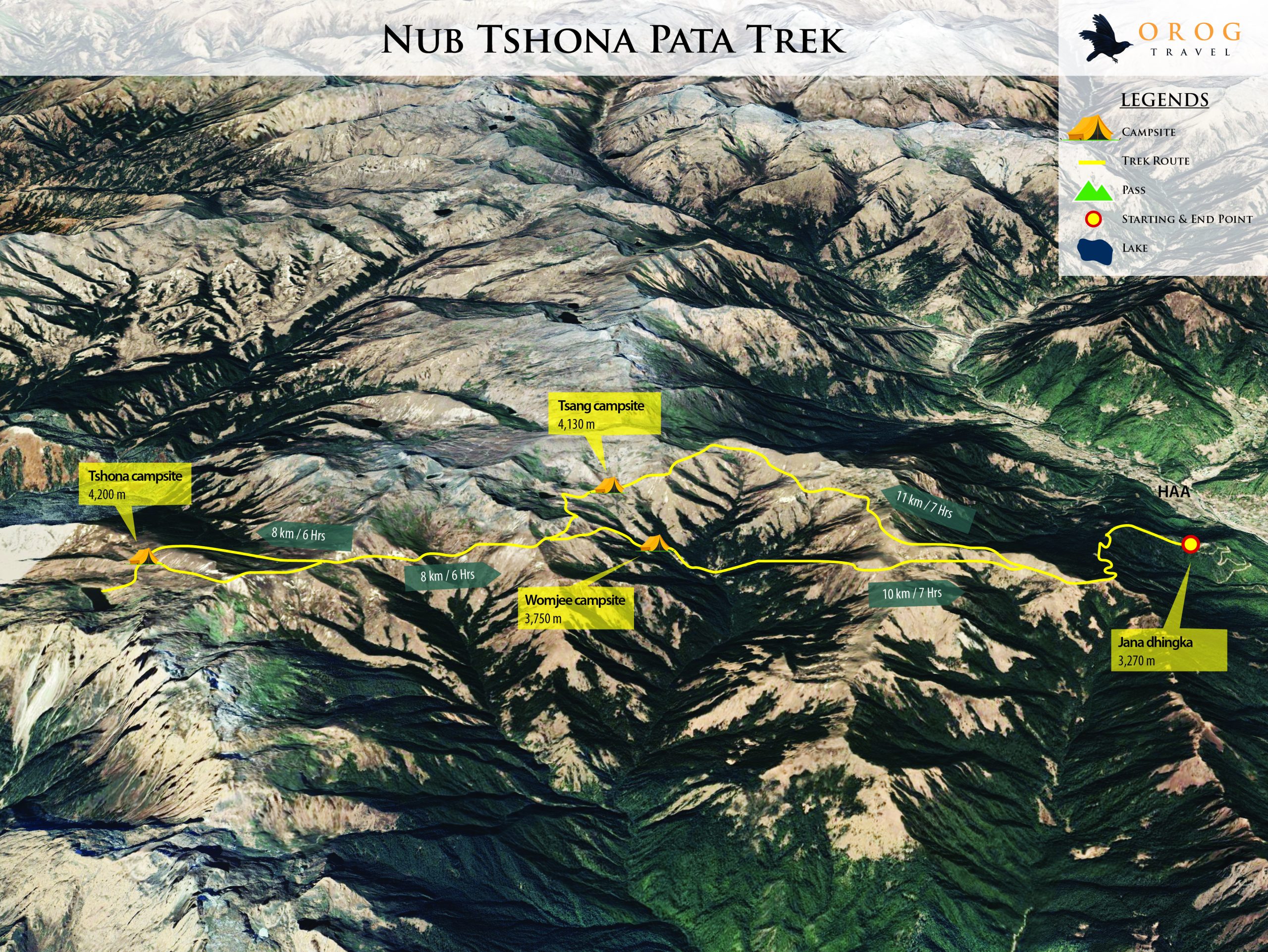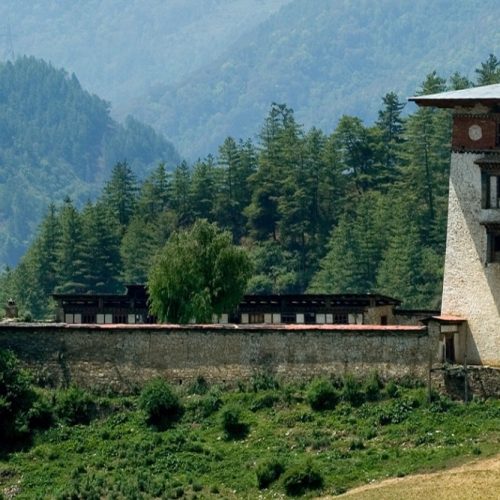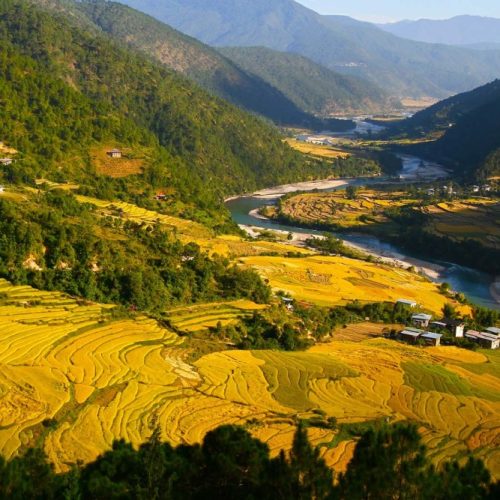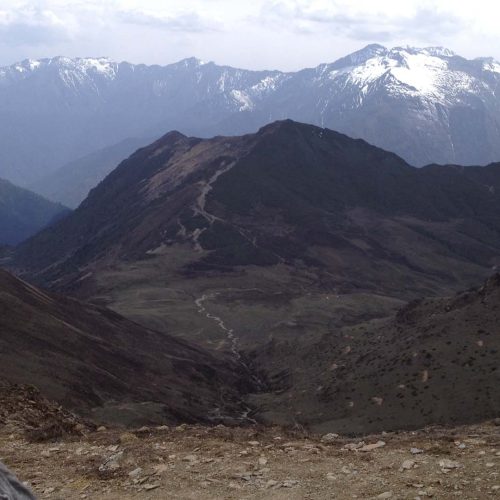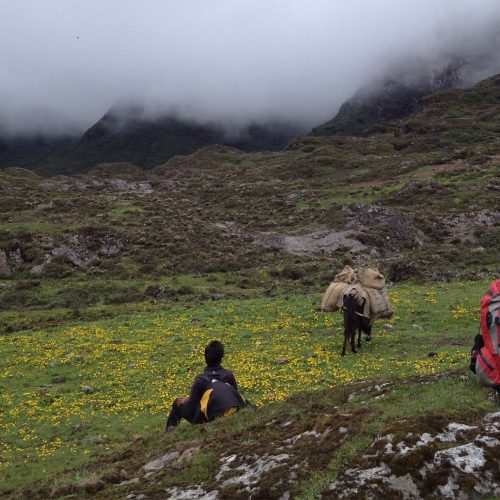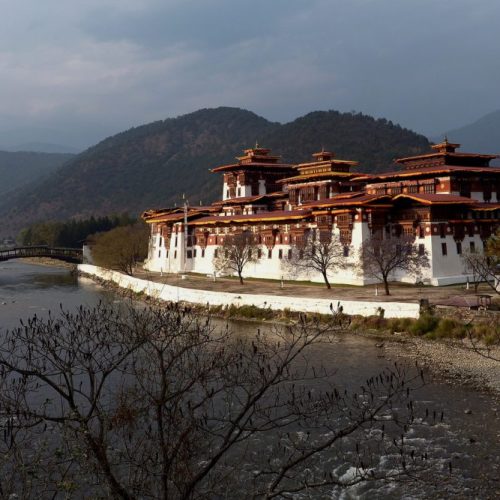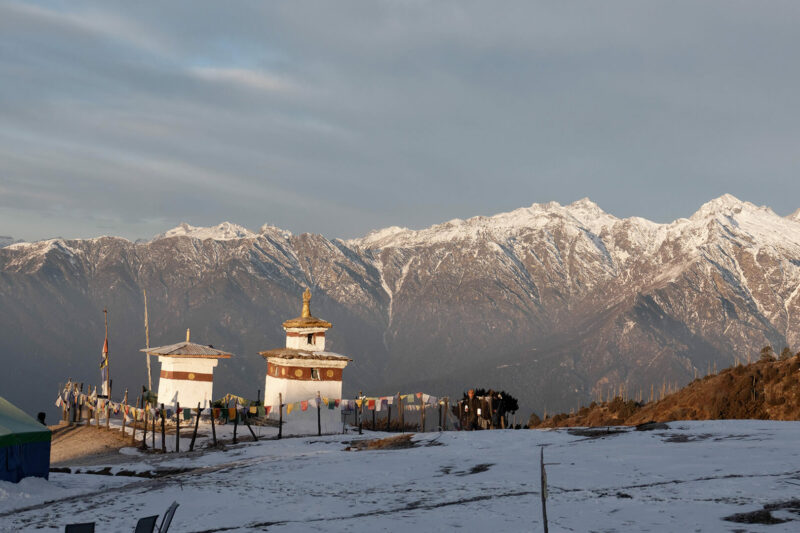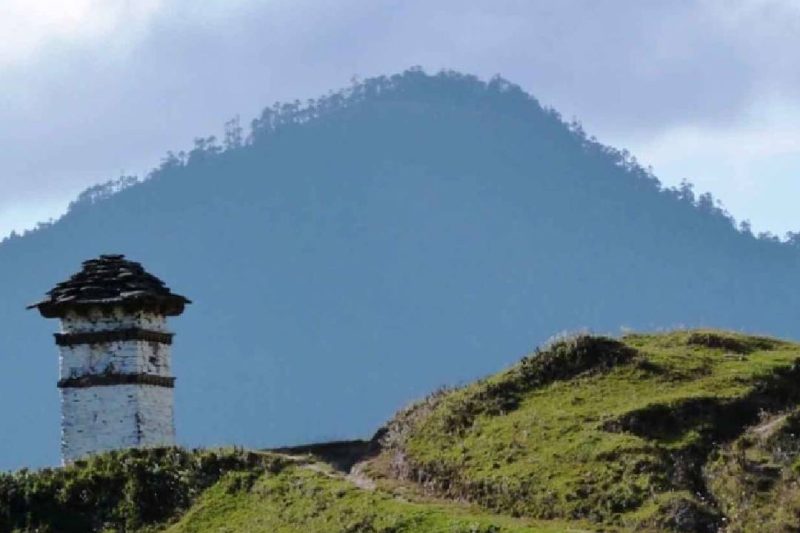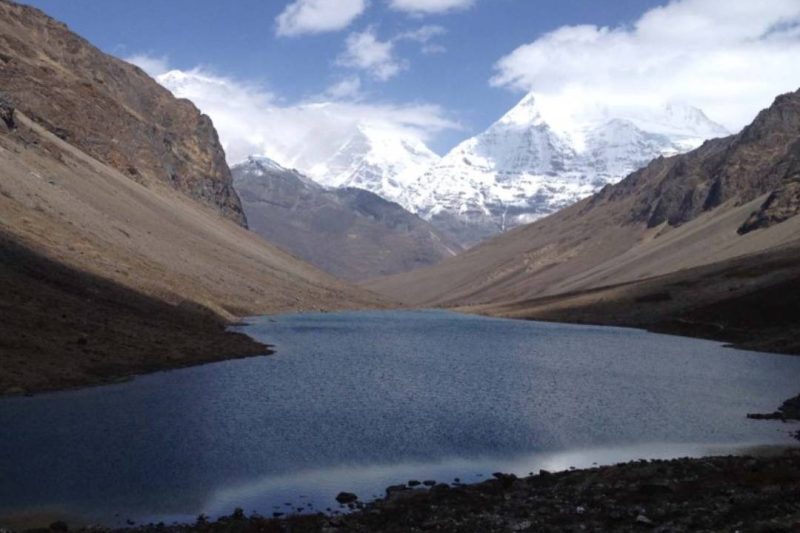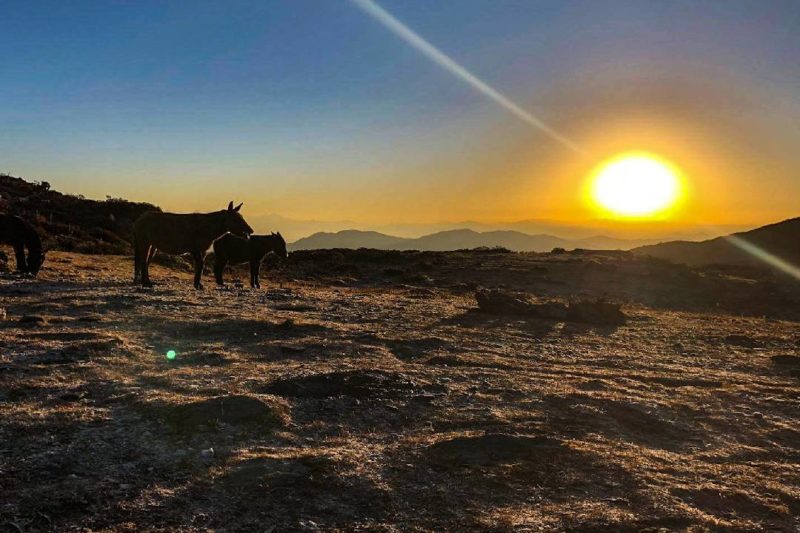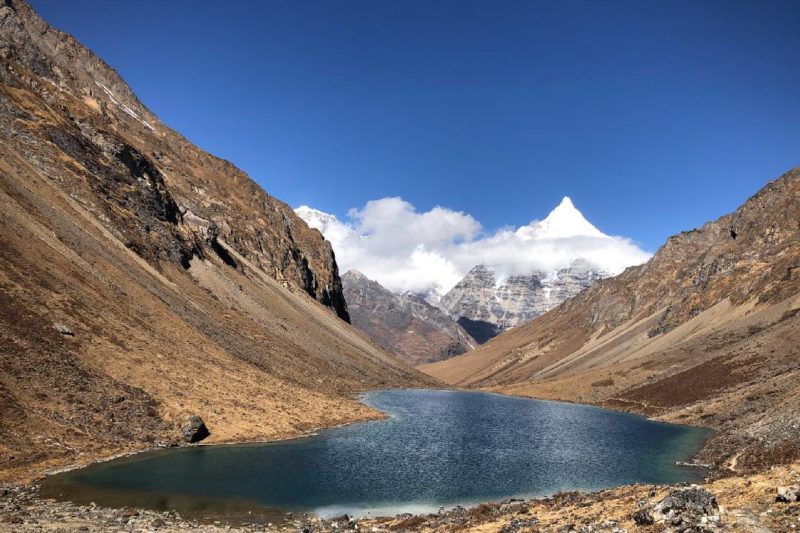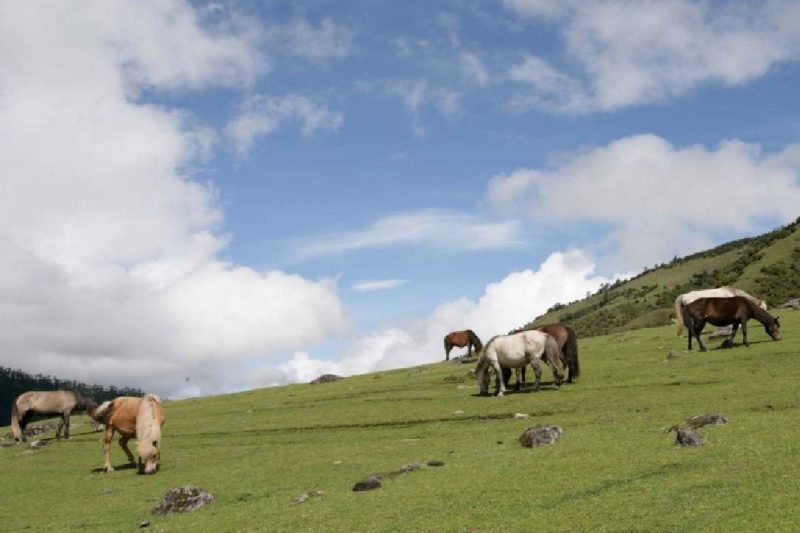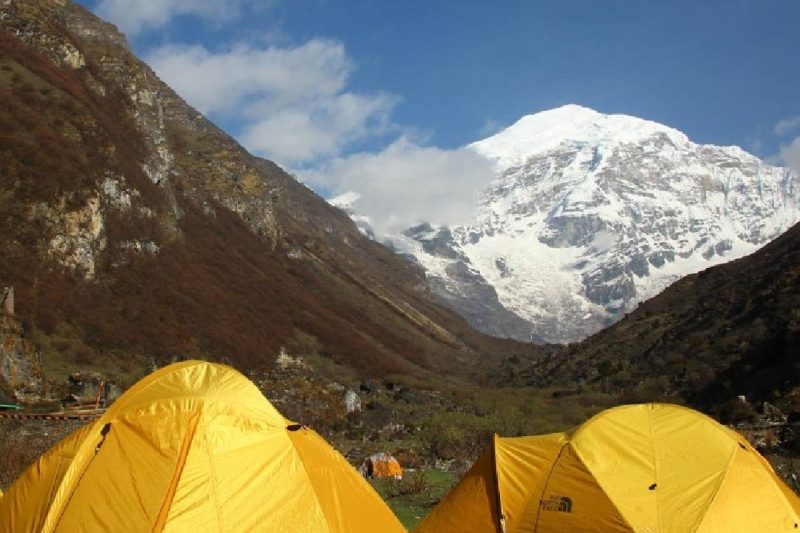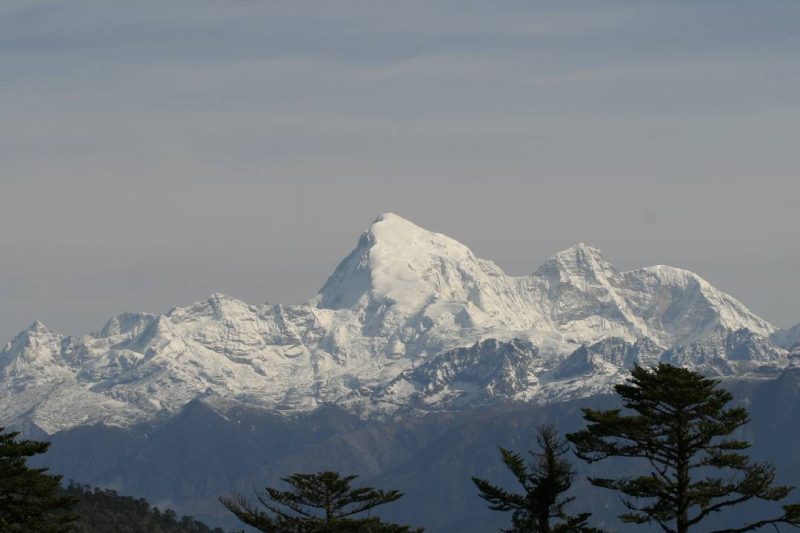The valley of Haa remains less known to travelers but provides a unique experience through the mountains with striking landscapes. Following the former trade route between Haa and Tibet, experience challenging 6 days one of a kind ancient trek.
Along the trek admire the spectacular Himalayan mountains, lush meadows, turquoise lakes, verdant lush forests and may even have a change to catch sight of rare local plants and animals, all at an altitude of around 4,000m.
Recommended time to experience the Nub Tshona Pata Trek is between April-end to mid-November.
Altitude in Paro: 2,280m
Onboard the aircraft, the flight is treated to spectacular views of snow peaked mountains and the Himalayan ranges. Paro airport (2,280m) is Bhutan’s only international airport where our dedicated team will receive you at the airport.
Paro Rinpung Dzong (Fortress of The Heap of Jewels)- Rinpung Dzong is an ancient fortress in traditional Bhutanese architecture with a complex of courtyards, temples, administration offices and open space surrounded by towering walls. All the buildings are equipped with huge windows with elaborate wooden carvings of traditional Bhutanese motifs. Paro Dzong is considered one of the finest examples of Bhutanese architecture and it’s one of the top tourist attractions in Bhutan. This impressive dzong is also seen during landing into Paro Airport.
National Museum of Bhutan – Ta Dzong. Originally built as a watchtower in 1649, atop a hill above the Rinpung Dzong, overlooking the whole picturesque Paro valley. Converted into a museum in 1968, its extensive collection includes astonishing antique thangka paintings, weapons and armor, and rich diversity of natural and historic artifacts.
Shagzo (Bhutanese woodturning at Sangay Wood Turning Factory) - The shagzo techniques use the age-old methods and each product is unique in shapes, sizes and colours. Learn the Shagzopa (Shagzo artisans), the essential steps in creating the elegant and functional products like wooden bowls (dapa), cups (dza phob) and plates with beautiful patterns, while keeping the ‘soul’ of the wood in it.
Altitude in Paro: 2,280m
Taktsang Monastery (Tiger’s Nest)- at 3,000m above sea level, this is one of the most sacred sites of Bhutan. It is believed that Guru Padmasambhava (Guru Rinpoche) came here on the back of a tigress in the 8th century. Lunch will be served at the Taktshang cafeteria and descend towards the Paro valley floor. The journey will take 6-7 hours in total.
Kyichu Lhakhang- one of the 108 temples built throughout the Himalayas by the Tibetan King Songtsen Gampo in the 7th century. The main chapel has roots as far back as the 7th century, with additional buildings and a golden roof added in 1839 by the penlop (governor) of Paro and the 25th Je Khenpo. Elderly pilgrims constantly shuffle around the temple spinning its many prayer wheels, making this one of the most charming spots in the Paro valley.
Altitude in Haa: 2,740m
Distance: 70km
Estimated travel time: 2,5hrs
Chelela Pass- One of the highest road passes in Bhutan located between Paro valley and Haa valley. On a clear day, breathtaking views of the Himalayan peaks including Mt. Jomolhair, Mt. Jichu Drake and Mt. Kangchenjunga can been seen. In this region blue poppies (Bhutan’s national flower) also bloom during the period of late May to July.
Kila Goemba Hike- The hike will last around 4-5 hours which begins with a 3km stretch of 500m ascent to the highest point at 4,500m. Passing the highest point, descend and pass through the picturesque hills of rhododendron and hemlock forest reaching the quaint nunnery Kila Goemba which offers the visitor an insight of the life of simplicity and the awe-inspiring view of Paro valley.
Distance: 9-10km
Estimated time: 5-6hrs
Camp altitude: 3,800m
The Nub Tshona Pata Trek begins from the temple following the trail through a lush forest of rhododendron and conifer trees reaching the beautiful meadow Tshokam at 3,600m. Continuing the route, to the mountain pass of Chouzu La (3,900m) and will pass near the expansive Yulo meadow at an altitude of 3,840m.
Camp location will be below Tshabjo La Pass (4,107m).
Distance: 15km
Estimated time: 5-6hrs
Camp altitude: 3,800m
Next is a short 15 minute’s walk to Tshabjo La pass (4,107m) continuing to hike down through the verdant rhododendron and juniper forest, cross a stream and another rhododendron forest before reaching Gongche La pass at 4,200m. The total trekking time to Gongche La pass will be 4-5 hours.
A rewarding stunning panoramic viewsof the great Himalayan mountains: Jitchu Drake (6,850m), Mount Chundu Gang (protector of the Haa valley), and the mountain passes behind.
Camp will be located at a meadow called Chhosho Lumpa (3,800m.
Distance: 10km
Estimated time: 3-4hrs
Camp altitude: 4,050m
Venture to the highest mountain pass – Tsejey La (or Tshejo La) at 4,370m, the elevation gain is approximately 500m. Admire the incredible view from Tsejey La pass with the rewarding picture of Mount Kanchenjunga (8,586m – the world’s third-highest mountain). Descend to a swampy area Tshew (3,990m) before ascending up to Dangka Bjido ridge at 4,100m. Finally descending to campsite at an altitude of 4,050m, near the sacred Nub Tshona Pata lake
Distance: 15km
Estimated time: 3-4hrs
Camp altitude: 4,000m
The trail leads to the valley of Haa- uphill to Dangka Bjido ridge at 4,150m, then slowly descend to Tshew, continue going up to Tsejey La pass (4,370m) whilst always enjoying the fascinating sight of Mount Kanchenjunga along the trail.
From this pass, trek continues to Chhosho Lumpa and a further descend to Gongche La pass (4,231m), with incredible views of Haa valley and endless mountain ranges.
Campsite will be at the meadow called Tshog Tshogkha at 3,800m, located close to one of the sacred lake.
Distance: 15km
Estimated travel time: 3-4 hrs
A easy trek with a slow descend, crossing picturesque mountain ranges until Chozu La pass. The trail continues through dense forests of junipers, rhododendrons, and pine trees until the start of the trek- the Drana Dhingkha temple.
Distance: 130km
Estimated travel time: 4hrs
National Memorial Chorten – one of Bhutan’s most prominent buildings. The Chorten is the monument of world peace and prosperity. For Bhutanese, the site also serves as the memorial to their Third King, His Majesty Jigme Dorji Wangchuck (1928-72).
Buddha Point (Buddha Dordenma) - At a height of 51,5m, placed on top of a hill in Kuenselphodrang Nature Park, the sight of the enormous statue of Shakyamuni Buddha is stunning and unforgettable. This giant statue is one of the largest in the world and is said to emanate an aura of peace and happiness.
Tashicho Dzong (Fortress of The Glorious Religion)- Tashichho Dzong has been the seat of the Bhutan government since 1952. Through the years, the dzong has gone through expansions and renovation and presently houses the throne room and offices of the king, the secretariat and the ministries of home affairs and finance. Other government departments are housed in buildings nearby.
Exploring the nooks and crannies of Thimphu city. Walk the streets of the capital, live the commotion, and experience the nightlife with good food and music.
Altitude in Punakha: 1,300m
Distance: 75km
Estimated travel time: 3hrs
Dochula Pass - The pass is a popular location among tourists as it offers a stunning 360 degree panoramic view of the Himalayan mountain range. The view is especially scenic on clear, winter days with snowcapped mountains forming a majestic backdrop to the tranquility of the 108 chortens gracing the mountain pass.
Punakha Dzong (Palace of Great Happiness). Built-in 1637, it is said to be the most spectacular dzong in Bhutan. Punakha Dzong was built at the confluence of two major rivers in Bhutan, the Pho Chhu and Mo Chhu, which converge in this valley.
In addition to its structural beauty, until the mid-1950s, it still served as Bhutan’s capital and the seat of the government. All of Bhutan’s kings have been crowned here, and it has witnessed the memorable wedding of the King of Bhutan, Jigme Khesar Namgyel Wangchuck to Jetsun Pema in 2011.
Pho Chhu Suspension Bridge- A pleasant hike through paddy fields and pine trees to Khamsum Yuelley Namgyal Chorten.
Altitude in Paro: 2,280m
Distance: 125km
Estimated travel time: 4 hours
Chimi Lhakhang- Hike to the Temple of Fertility (altitude: 1,500m). An enjoyable hike, taking about 30 minutes through the rice and mustard fields and the uniquely decorated houses of Lobasa Village.
Simtokha Dzong- Simtokha Dzong was built in 1629 by Zhabdrung Ngawang Namgyal. Strategically built on a projecting ridge with deep gullies, the Simtokha Dzong overlooks the entire Thimphu Valley. The area was inhabited by many demons, and legend has it that the site where Zhabdrung decided to build the dzong was occupied by a demon that would harm travellers who stayed overnight. Zhabdrung visited the place and subdued the demon, banishing her into the rock on the hill where the present dzong is located. The dzong was constructed enclosing the rock, to ensure the continuing imprisonment of the demon. Hence the dzong derived its name as Simtokha, from the word sunmo (demon), do (stomach) and kha (on) - the dzong on top of the demon’s stomach.

